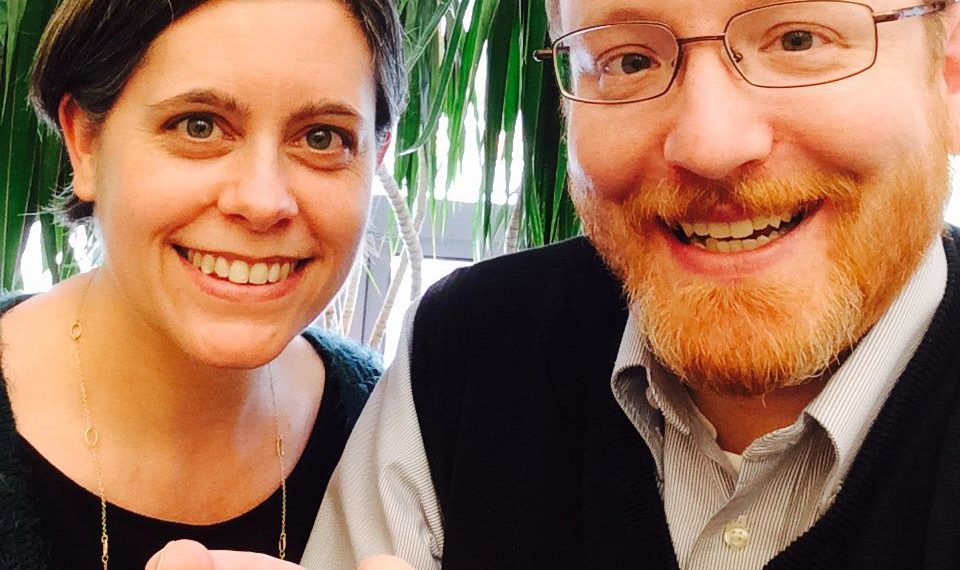
“It’s an amazing endeavor. It’s complicated, it’s hard work and it’s critical to the backbone of emergency medicine.”
– Dr. Dan Ratner, Professor of Bioengineering, University of Washington
When a patient needs a blood transfusion, it can take over 45 minutes to determine their blood type. During that time, doctors have to rely on universal type O- blood, which is in constant short supply and should be reserved for the most critical emergencies. As a clinical hematologist and blood group expert who regularly sees patients, Bloodworks Northwest Research Institute’s Dr. Jill Johnsen had always just accepted the way blood typing was done and assumed that this strain on the blood supply was unavoidable.
“The problem is, blood typing is around a 100-year-old technology,” Dr. Johnsen said. “It’s taking blood and putting it together with plasma or serum or antibodies and it takes a long time with a large blood volume and has to be done at a specialized blood lab. All of that adds time between when I wish I had their blood type and when I actually know it. I had totally gotten used to the idea that we needed a universal donor at all. We need the universal donor because we don’t know their blood type.”
That is, until one fateful day in 2009 when Jill met Dr. Dan Ratner, a bioengineer at the University of Washington. In what Jill describes as a “thunderbolt moment.” Drs. Johnsen and Ratner put an idea in motion that is set to transform transfusions – rapid, near-patient blood typing on a silicon chip.
Dr. Johnsen describes the moment of this breakthrough: “This technology started in a conference room in the middle of the week where Dan and I and some of the other scientists are sitting there and we were talking about how we can collaborate on this new technology that he had and some biology that I had studied and it was that moment when someone in the room said, ‘Can this thing see a blood cell?’”
Dr. Ratner illustrates how his research at the UW made the natural leap into the blood typing space: “In defining whether you’re an A or a B, AB or O, these are actually sugars. So, Jill and I both had an interest in sugars. We were making technologies in my lab at the University of Washington to look at the relationship between different cells in these sugars. So, the translation into the space of blood group typing was natural and organic. And for me, the most exciting thing working with Jill was getting to peek behind the curtain at all that’s involved in safely giving patients blood products. It’s an amazing endeavor. It’s complicated, it’s hard work and it’s critical to the backbone of emergency medicine.”
How does it work? Drs. Johnsen and Ratner took advantage of a well-established technology from the telecom industry to develop their blood typing chip. By flowing a small sample of blood over tiny sensors, they found that it was possible to determine a patient’s blood type quickly, easily, and inexpensively. The science is called silicon nanophotonics.
“It sounds fancier than what it really is,” Ratner said. “It’s like the microchip that’s in your computer or in your cell phone but it does one thing key that’s different. It uses light as opposed to electrons. And so, by putting the right chemistry on these photonic circuits we can ask questions about what molecules are present in a sample, or in the case of blood typing we can ask for instance, does the patients have an antibody in circulation that might react to the specific blood type? Or do they have a specific blood type on their cells?”
With results returned in minutes instead of hours, their invention will allow doctors to better utilize our blood supply, conserving type O- blood for the patients who really need it. Today, Jill and Dan’s invention is the basis of a new company known as SiDx (pronounced Sigh-Decks), that’s setting out to modernize blood testing. SIDx was co-founded by Jill, Dan, and entrepreneur Eric Larsen.
Larsen envisions SiDx instruments in every doctor’s office and hospital in the future, with portable versions saving lives in military settings and during natural disasters. As for Dr. Johnsen, she realizes that SiDx would never have come to be if she wasn’t a researcher at Bloodworks:
“I would never have thought,” Johnsen said, “or the other scientists in the room who were really critical, none of us would have thought to say, ‘we’re having this conversation about detecting viruses and bacteria, and I know in the back of my mind, blood typing’s a problem, and can you see a blood cell?’ That connection would never have been made if the scientists had not been in a blood center.”
Tell Us What You Think!